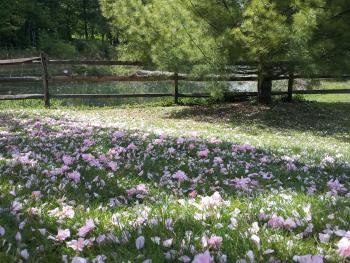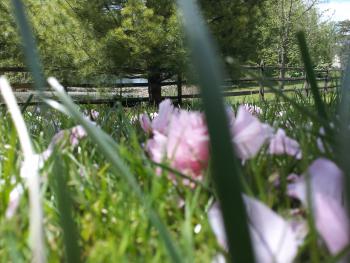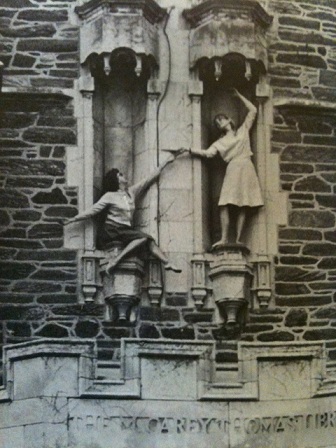Serendip is an independent site partnering with faculty at multiple colleges and universities around the world. Happy exploring!

Support: who gets it and who needs it?
“Prisoners of a Hard Life” (PHL) took me a long time to get through. Not because it was dense of long but because the information I was taking in was so intense. I felt myself disgusted and uncomfortable with all of the information in front of me. I didn’t know how to digest it the first time I was going through it so I decided to put it down and pick it up another time. Though I had only read the first few pages during that first sit in, I felt that the information needed to be shared. I clearly remember talking to my roommate about it, at our kitchen table, and telling her how insane all the facts and numbers were. How incredible it was that “Of all people incarcerated in New York with drug offences: 93% are African American or Hispanic.” This really struck me because as a Latina woman, I imagined my cousins, aunts, sister and friends in prison on a non-violent crime. I could envision my mother behind bars, away from her five children.

Grace Marks, Celebrated Murderess
This summer I read a novel by Margaret Atwood called Alias Grace. It is based on the “celebrated murderess” Grace Marks a maid in Canada who was arrested for aiding and abetting the murder of her employer and the housekeeper in 1843. The novel is largely told from the point of view of both Grace and a doctor who listens to her in his study of criminal behavior, and in this way we hear her version of the story. The way Atwood retells it, Grace Marks is portrayed as someone who, not only suffered from poverty, a physically and emotionally absent mother, and an alcoholic and abusive father; she also was a victim of circumstances and was used by the farm hand who was hanged for the murd

Victims of the System That Work Against Them
After reading "Prisoners of a hard life" I felt very uncomfortable for a very long period of time. Although I knew, or have heard of, many of these statistics it is still an issue that makes me extremely uncomfortable and unhappy. All of the stories of these incarcerated women include some type of abuse or neglect, even though I'm pretty sure there are some stories of women committing crimes without having such abusive background history. That is to show that there is more than just the crime; that something has happened to these women that made then make the decisions they did. A lot of them didn't even seem to have a choice. I noticed that in a couple of these narratives, there has been some type of systematic "aid" that instead of helping, they caused more damage - foster care for example.
As I mentioned in class, I believe that prisons and jails are simply a method of immediate response, an unfair one. I attended a workshop during the summer where we spoke a lot about these immediate response methods. The analysis they gave us about these immediate response: there is a river. You see a baby in it; you pick it up and hand it over to someone to take care of it. Then there is another baby, you also pick that baby up and hand it over to someone else to take care of it. Then there is another baby, etc. You take in all these babies and hand them over to someone to take care of them, but when do you stop to think about: Where in the world are these babies coming from to being with?!

How do you hold a "thing" accountable?
As I read Colored Amazons, I could not get over Alice Clifton’s story who was a slave seeking freedom by supposedly killing her newborn baby. Whether she killed her baby or not, I could not believe that the court had the audacity to try Alice as a human even though her status as a slave was more objectifying than human. So I began to wonder about why she was in court since her appearance would mean that she was worthy of human services—a reality that was not the case beyond court doors. What was truly her crime, killing her dead daughter? Using her daughter’s unfortunate death as a ticket to freedom? Or for, which seems more likely, depriving her white masters of a profitable object, both for sex and labor, in the future? Although Gross, shatters the pretense that Clifton’s trial was on the basis of sympathy, morality and humanity, Clifton’s story is a disturbing reminder of how our justice system works today. Every time I hear about the need to crackdown on drug dealers, or the need for more law enforcement—anything that might increase the presence of the law in low-income neighborhoods or spotlight people of color –I cringe. Although arguments for the removal of illegal activities are valid, I always feel—scratch that—I know there are ulterior motives behind why certain illegal activities and groups are infamously publicized in the media.

Colored or dark
The whole time I was reading Colored Amazons, I am constantly picturing the movies of the stories written in the book in my head since Philadelphia is just too familiar. I think after reading this book, I will look at the city in the same. Every time I walk on the street, I will think of the injustice and inequality drenched in the street.
Philadelphia is an interesting city. It’s definitely not the best one but it reminds me a lot of my hometown, a city with too many stories, both glorious and sad ones. Back to Colored Amazons, Philadelphia was one of the few big cities that allow free blacks before the abolition of the slavery at that time. However, after two hundred years, it remains to be one of the city has racial problems. After reading very informational introduction, Gross tries to connect many missing pieces or the overlooked pieces about African Americans in the judicial system, especially women.

Ramona
In Anne’s Silence class we’ve been talking a lot about poetry, and the idea that there is silence on the page surrounding the words in a poem. In some ways, the white silence around a poem gives the words themselves added weight, because the noise and distraction of typical prose is stripped away, and all that is left are the most important thoughts. I found a similar phenomenon to be true when reading the “Prisoners of a Hard Life” graphic novel, but rather than being surrounded by emptiness, the words were attached to illustrations. Growing up, I never read comic strips or any kind of graphic novel, but I have come to really love their poignancy since taking an English course that largely focused on a graphic novel about the Weather Underground. Stories mirroring Latisha’s, Denise’s, Ramona’s, Angelica’s, and Regina’s are relayed in innumerable scholarly works about the prison system, but somehow their intensity seems much more subdued compared to a comic with illustrated faces jumping out of every page. Ramona’s story is especially heartbreaking to me because I’ve done a lot of work with sex workers and there is an incredible irony in the fact that carrying around condoms – which can not only protect their own health, but is an incredibly effective public health strategy – can also get women arrested for solicitation.

Rhoads Pond-Site Selected
I was part of a group that transected Bryn Mawr's campus last semester with a small group of students and teachers. At the end of our walk around the perimeters of campus, we stopped in front of the site I am choosing to re-visit throughout this semester. We stopped by Rhoads Pond and were allowed to sit wherever we liked, either on top of the hill or right next to the fence. I chose a cherry blossom tree right in front of the pond and fence. It was in full bloom at the time, and I was able to appre
 ciate the surroundings and these helped to boost my writing. I will specifically take time to sit under the tree and look out at the view of the pond. The background of the place is made up of tall trees at the other end of the pond, and the boundaries include the fence. There are some tall grasses and weeds at the borders and in front of the lake. Sometimes, these may block the view of the actual water, and this is where "terra incognita" as a concept comes in. I cannot fully see the lake, some of it is obscure from where I am sitting, so it is unknown to me unless I decide to climb the fence and dip my feet into the water. Which might take away from the neutral observation part of the project. This image is one I took at the end of our group trek around campus.
ciate the surroundings and these helped to boost my writing. I will specifically take time to sit under the tree and look out at the view of the pond. The background of the place is made up of tall trees at the other end of the pond, and the boundaries include the fence. There are some tall grasses and weeds at the borders and in front of the lake. Sometimes, these may block the view of the actual water, and this is where "terra incognita" as a concept comes in. I cannot fully see the lake, some of it is obscure from where I am sitting, so it is unknown to me unless I decide to climb the fence and dip my feet into the water. Which might take away from the neutral observation part of the project. This image is one I took at the end of our group trek around campus.

Self
I just have a picture of myself in front of the Trevi Fountain. I think that spending four months abroad and being able to travel really opened up my world. I like to reminisce about how liberated I felt there. In that picture, I'm me, and I'm happy and I'm without worry.

The Borders of Pangea
Solnit speaks a lot of the border between being lost and knowing where you are. She references Ptolemy's notion of Terra Incognita, which entailed the possibility that the Earth went well beyond established boundaries and an all-encompassing ocean. This made me think of Pangea, a state in which all land was connected, with no divides between the continents. I wanted to enact this with select Bryn mawr buildings, and see what it would look like if several of the dorms were so near to eachother they were practically inseperable. By doing this, I discovered that this created several small spaces were created between the dorms, which fade into the foreground while the large buildings stand out. Additionally, what went beyond the exterior of this new layout seems to fall away into gray space. I wonder what would be the effect on our campus if it was actually situated like this.




